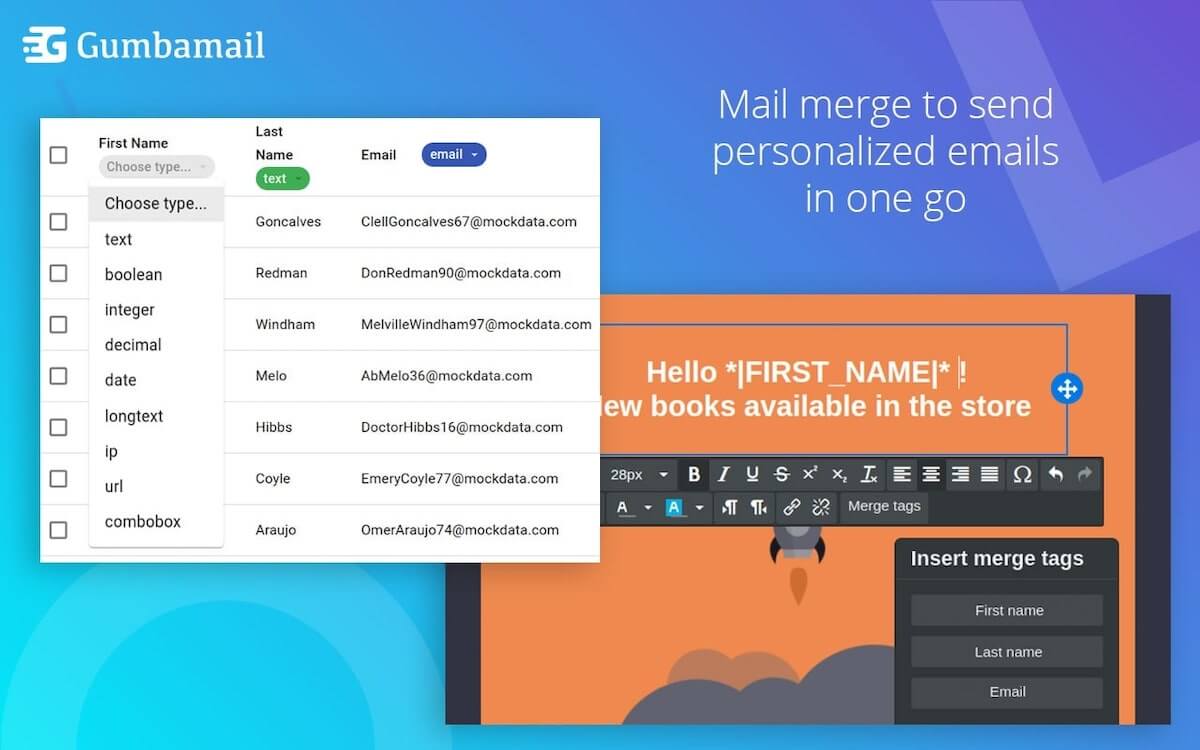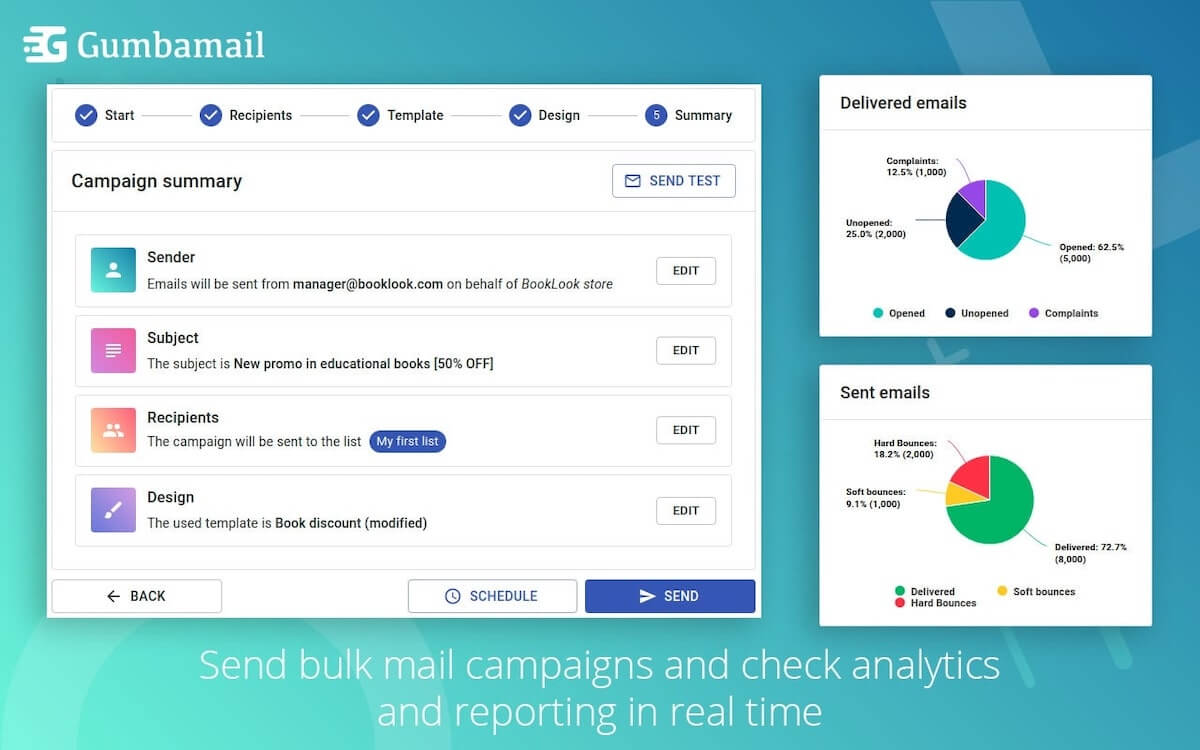Email Marketing 101: 6 Steps to Increasing Engagement
If you’re a small business owner looking to develop a digital marketing strategy, email should be the first place you invest.
Why? Because it has the best return on investment compared with any other marketing channel, including SEO, web copywriting, and social media. In fact, 70% of marketers agree that email marketing offers “good” or “excellent” returns — more so than many other platforms. Research also shows that email brings in $42 for every $1 you invest, which gives a significant boost to your bottom line.
But if this is your first time diving into email marketing automation, how do you know where to start? Below, we offer a crash course in email marketing 101, including how to write good email content, how to boost conversions within transactional emails, and which email service providers are best suited for your small business.
Email Marketing 101: 6 Steps to Launch Your Strategy

Before you send your first e-blast, you need to know how to attract new subscribers, send quality content, and increase your conversion rate. Below, we offer a few helpful pointers on how to develop an effective email marketing strategy.
1. Set Realistic Expectations
Before we dive into the ins and outs of email marketing 101, let’s get one piece of advice out of the way: You need to set realistic expectations, taking your time and budget into account.
If you’re a stand-alone business owner or a one-person marketing team, you won’t have time to launch a weekly newsletter, create six drip campaigns, and make five different opt-in forms. Instead, take stock of how many hours you can reasonably dedicate to email marketing each month, and work backward. For example, it might be a reasonable goal to publish a monthly newsletter, then a promo email once quarterly.
2. Develop an Enticing Lead Magnet
Contrary to what you may believe, you won’t start email marketing and have people magically join your list.
Instead, you need to create something of value that entices readers to offer their email address in exchange. Create a downloadable freebie where potential subscribers will fill out an email form, then place the form multiple places on your platform (i.e. as a pop-up form on your homepage, as a bit.ly link in your social media profiles, or at the end of a blog post discussing a similar topic).
Successful opt-ins vary by industry, but could be a sample shopping list (for a food blogger), a Squarespace tutorial (for a web designer), a quiz investigating your personality (for a career coach), or Lightroom presets (for a social media influencer).
3. Craft a Welcome Email Series
Once an email subscriber joins your list, you want to immediately send them valuable content. Create an autoresponder series that confirms their subscription, and let them know what types of content they can expect to see from you in the future.
When pulling content for your welcome series, remember this: Just because content isn’t new to you, doesn’t mean it isn’t new for your readers. In other words, use this opportunity to build the best email sequence possible, adding:
- Links to your most popular or most-shared blog posts over the years,
- Recent industry reports or thought-provoking news, or
- Free resources, such as quizzes, worksheets, or recordings of past webinars.
The above list is meant to provide ideas, only — you shouldn’t overwhelm your readers with a link to every piece of content you’ve ever created. In addition, try to respect new subscribers’ time and inbox space by spacing your emails 2-4 days apart, rather than bombarding their inbox several days in a row (otherwise, you might boost unsubscribes or end up in the spam folder).
4. Allow Your Audience to Drive Your Content Marketing Strategy
When first developing a digital marketing strategy, most beginners start with the question, “Just what am I supposed to write about?”
Content within email newsletters or email automation campaigns should always answer questions from your target audience. Your content should always offer helpful advice within your industry — even when it doesn’t directly lead to a sale. You need to build relationships with your subscribers by proving you are an expert in your field before you can convert readers into paying customers.
Here’s a good way to start: Keep a running list of any and all questions asked from clients (and potential customers) within in-person meetings, prospect calls, or even in the comments section of a social media post. For example, if you own a cycling studio and athletes ask you which types of shoes are best, consider writing an email with the subject line, “5 pieces of apparel every athlete should have in their closet.” Or, if you’re a holistic nutritionist who specializes in balancing hormones, draft email content listing foods that can help fight adrenal fatigue.
5. Experiment With A/B Testing
Once you’ve sent a few email marketing campaigns, you can begin experimenting with different types of content to increase engagement. To do this, you’ll need email marketing software with built-in reporting metrics, to keep track of subscriber behavior and retention.
For example, your email open rate is directly correlated with how well your subject line captures the attention of your readers. Therefore, split your email list in half and send out one (“A”) subject line to one segment, and another (“B”) subject line to the other. Or, to increase your click-through rate, consider sending two types of emails to your list: one, plain-text HTML version, and one email template with headers, visuals, and CTA buttons at the end, to see which approach gets the most clicks. You can also experiment with the length of your email, which topics you cover, whether or not to use header images, or what time of day you send your email.
6. Personalize Your Messaging
An effective email marketing 101 strategy invests in knowing and understanding your readers. To do this, you’ll need to collect data on each subscriber on your list, then send targeted messages based on their own, unique interests.
To make your emails feel more personal, you’ll need an email marketing platform with a built-in CRM system where you can add custom fields. Then, fill in these fields with helpful demographic information, such as their geographical location, birthdate, e-commerce history, or contact type (for example, whether they’re a potential customer, current customer, vendor, or friend). From there, leverage this data to personalize your content, such as:
- Address each message to the subscriber’s first name, so it reads like a letter from a friend.
- Send a special promo email with a coupon on a subscriber’s birthdate
- Segment your list based on past order history, and send out a blast on new products to your most loyal customers.
- Increase your conversion rate by creating an abandoned cart email, reminding customers of their potential purchase.
To Launch Your Email Marketing Strategy, You Need the Right Tools

Hopefully, this post gave you a few ideas on how to use email to boost sales for your small business. However, to put these steps into practice, you need the right email marketing tools to get started.
To help increase engagement, you need an email marketing platform that offers built-in reporting, CRM, and personalization capabilities. Plus, it’s best to have a tool that’s affordable and easy-to-use.
Gumbamail is a user-friendly email marketing tool that allows you to send targeted blasts straight from your existing Gmail account. With Gumbamail, you can personalize your messages, add custom fields, easily design emails from 800+ templates, and keep tabs on subscribers through your reporting dashboard. Plus, it offers a free plan to help small business owners get up and running.
Ready to see how Gumbamail can transform your digital marketing strategy? Download the free plugin to get started.


